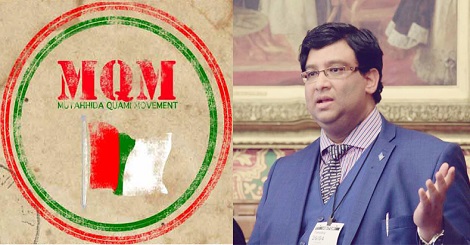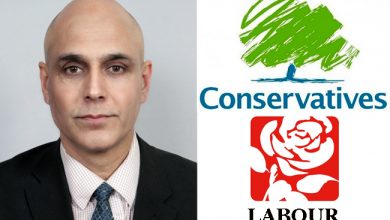MQM’s Journey of Violence By Dr Iqtidar Cheema

Muttahida Qaumi Movement (MQM) workers’ attack on ARY News is one of the worst example of harassment of media in Pakistan. The attack which left one person dead and several seriously injured was instigated by the incitement of hatred against the country and the media organizations by MQM’s supremo Altaf Hussain. Mr. Hussain is on a self-imposed exile in London and enjoys an extravagance life in his London apartment. He is currently being investigated for various heinous crimes including money laundering and assistance in Murder. In his yesterday telephonic speech to his activists; he allegedly not only reprimanded the media but also raised anti-Pakistan slogans.
This is nothing new; shortly after forming the All Pakistan Mohajir Student Organization; Mr. Hussain portended the political violence that resulted into burning of Pakistan’s flag on 14 August 1979 at the mausoleum of Quaid-i-Azam. He was imprisoned for burning the Pakistani flag. After its formation on 18 March1984 the MQM evolved quickly as a militant organization with a highly-motivated squads trained in the use of lethal weapons. Since its inception Altaf Hussain, and MQM’s mode of operation has primarily remained a monopoly on violence. MQM adopted different forms of urban violence such as extortion, target killings, kidnapping and even incorporating criminal gangs dealing in petty crimes. Moreover, the party also institutionalized the torture of political opponents and extortion of people in Mohajir dominated areas. The party’s collection of bhatta (protection money) is considered as a notorious practice throughout the Pakistan. The bhatta system more than anything, exemplifies the manner in which perfectly ordinary people are sucked into whole sale corruption. Worse example of this illegal activity is that between March and June 2012, twenty traders were killed for failing to pay extortionists, and another fifteen were abducted to facilitate payments.
From 1992-1996 Pakistani state undertook a more aggressive approach to curtail the MQM’s militancy and reduce its power through ‘Operation Cleanup’. The militants of the party however resisted, leading to more violence. In 1995, more than two thousand people were killed in Karachi during MQM clashes with police, Liaquatabad’s death toll of 185 ranked as the highest in the city. More of MQM militants were recruited from Liaquatabad than any other locality in Karachi.
However, the current ongoing stretch of violence in Karachi is significantly more complex and explosive than the situation in the 1980s and 1990s. The events of 12 May 2007 highlighted once again the violent nature of MQM. Over 40 people were killed in ambushes, armed clashes and execution-style killings across the city, on a day when the Chief Justice of Pakistan had planned to address a gathering of judges and lawyers at the Sindh High Court. Three courts in the city – the Sindh High Court, the Malir District Court, and the City Courts – were surrounded by armed supporters of the MQM from the morning onwards. Journalists and television stations were targeted and attacked. The airport was virtually besieged with passengers, including the Chief Justice and his team, being unable to drive or even walk into the city.
Since 2008 Karachi has again been tormented with violence, in which more than 15,000 people have been killed. In September 2011 the director-general of the Rangers, tasked with restoring law and order in the city, described the security situation in Karachi as “worse than North Wazirisistan Agency,” the tribal area where the Pakistani Taliban and other Afghanistan-focused militant groups had sought sanctuary. MQM has been under the spotlight when it comes to the Rangers-led operation which has been underway in Karachi since Sept, 2013. During the operation; Rangers have detained a number of MQM militants and political activists. Since the last week, the MQM had been protesting outside the Karachi Press club against the said operation. This protest ended with a violent attack on ARY News.
It is very clear that despite electoral success the MQM is unable to shed its militant image, or indeed its militant ethos. The organizational structure is tightly controlled by the core leadership, and force is a common way of dealing with political rivals as well as internal dissenters. The successive federal governments’ unwillingness to take strong action against MQM has also caused violence to escalate. It is about time that the federal Government should firmly deal with “ethnically-based mafia”.

